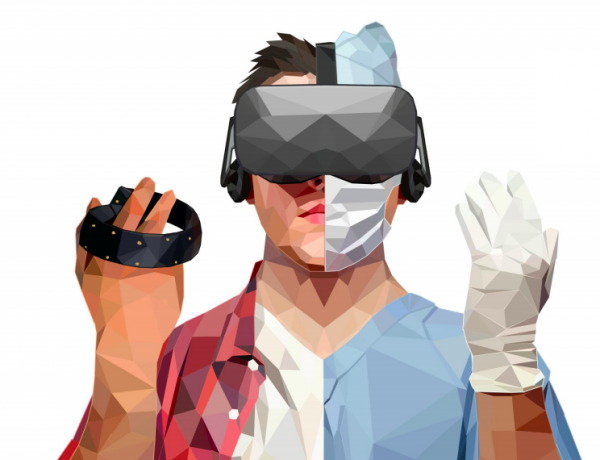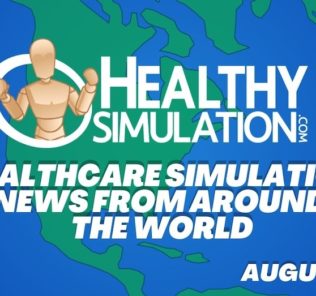Virtual Reality in Clinical Training: Global News From Around the World
Virtual Reality technology is taking off at an accelerating rate. All around the world, institutions are becomingly increasingly aware of its application in skills-based training. Here at HealthySimulation.com, we believe the technology is so powerful, it may even act as a catalyst to the entire medical simulation community from its current state in the adoption curve of “early-adopter” (~10%) to early majority (~30%). Here then are a few stories from around the globe highlighting the continued expanded use of VR in medicine:
Army leaders see virtual, augmented as the future of training: For the U.S. Army, Training now means more than mock squad grass drills behind the barracks. Technology is finally getting to a point where soldiers can enter a simulated world and run through combat-like scenarios on the actual terrain where they will fight, whether that’s boots on dirt, flying in the skies or firing from remote platforms. To make that happen, the Synthetic Training Environment CFT commander, Maj. Gen. Maria Gervais, has already pushed out advanced trainers and has more on the way, including the backbone of how a multitude of soldiers, commanders and units will conduct realistic training at home station to help them prepare in ways they never before could.
And the Squad Immersive Virtual Trainer is next on the list. That will help a squad operate in the simulated environment together in real time. The most pressing and promising work, though has been in developing “One World Terrain.” That’s seen major advancements in building simulated terrain models from real world data. Processing times for the data needed to create a usable environment shrank from months or weeks down to days or hours since the team started work, she said.
Sponsored Content:
AV Magazine “Soaring Simulation VR Demands”: Spending the day with VRgineers’ ceo and co-founder Marek Polčák at the company’s headquarters in Prague not only opened our eyes to the complex research and development processes involved in creating the developer and manufacturer’s high-resolution professional VR headset, it offered an insight into the diverse enterprise-grade applications it is being used for. Initially adopted by the automotive industry, VRgineers’ headsets then started being used by the wider transport sector. “Whether it’s planes or ships, the processes are the same,” says Polčák. “You need to design, verify and test how they behave, which is easy to do using VR.” The company’s focus then moved to simulation; the demand for which has continued to grow for the last six months and now makes up 30% of VRgineers’ client base.
“This is because the quality has reached a level that makes it convenient and economical to use VR compared to projection simulations,” he adds. Anticipating significant growth in transportation and simulation – especially flight simulation for training and military applications – Polčák also hopes to penetrate the healthcare industry. “We believe our technology – eye tracking, lenses or a combination – is useful for the retail market too, but it’s still too expensive. If we find the right partner, an established retail brand, we could design and develop a version of the headset they could deliver as their own brand.”
VR Times “In Australia, University Students Using Virtual Reality and Augmented Reality to Learn Anatomy”: La Trobe University in Australia is now deploying virtual reality and augmented reality in helping students learn about human anatomy. The pilot program offers a 12-week AR-powered learning program. This is the latest sign that XR technologies are creeping into the learning environment in a very practical sense. The pilot program of the technology is meant to help students boost their spatial awareness, explorative learning and accessibility. The augmented reality application offers students a 24-hour access to three-dimensional anatomy images via their phones, iPad or computers.
On campus, virtual reality headsets will be used to offer students access to virtual reality technology. Augmented reality technology enables students to not only visualize but also manipulate the anatomical structures and therefore develop a deeper understanding of the human anatomy. Students can even superimpose anatomical structures over their peers who can subsequently perform movements with the app to better understand concepts such as muscle function. The augmented reality anatomical technology can come in handy in teamwork as well as in self-directed learning. The technology will help improve access to learning. Students will be able to study very high-quality 3D images with clinical cases, text and quizzes not only in the classroom but also on public transport and at home.
Sponsored Content:
HBR “Research: How Virtual Reality Can Help Train Surgeons”: Advancements in medical devices and surgical techniques hold promise for saving and improving lives. But our current system of training and assessing surgeons has lagged behind the pace of innovation — leaving some doctors unprepared to perform complex surgeries and putting some patients at risk. Using virtual reality technology in training may play an important role in addressing these deficiencies and improving skills.
In the study, which was performed over two weeks, 20 participants were randomized between a traditionally trained group and a group that underwent VR training on the Osso VR platform to a specified level of proficiency. Then, each participant performed a tibial intramedullary nailing, a procedure to repair a fractured tibia, one of the bones running between the knee and ankle. They operated on an artificial “sawbones” model, graded by a blinded observer.
As measured by the Global Assessment Five-Point Rating Scale, participants in the VR group received significantly higher ratings in all categories compared to the traditionally-trained group, with an overall improvement of 230% in the total score. VR-trained participants completed the procedure an average of 20% faster than the traditionally-trained group. They also completed 38% more steps correctly in the procedure-specific checklist. Both findings were statistically significant. This research was widely covered including by MedCityNews (photo credit).
Using Virtual Reality to Train Interdisciplinary Teams of Healthcare Students: “IPE is an incredibly valuable experience for health professions students to have, and collaborative team-based palliative care has been shown to have a real impact on improving quality of life and patient care while lowering healthcare costs,” explained the study’s first and corresponding author Amy L. Lee, an assistant professor of family medicine at Tufts University School of Medicine. “Interprofessional learning is a crucial component for health professions training, but it’s often easier said than done. Challenges aligning students’ schedules to physically meet and work together are the most-commonly cited obstacle. Communication in real-time via a virtual setting might help address this problem.”
The Tufts research team found that the VR tool was both convenient and comfortable for students to use and that it improved their perceived value of other healthcare professionals. The students also claimed that the experience helped them appreciate the patient’s symptoms, reporting an increased sense of empathy in the post-session survey. Furthermore, this simulation allowed the users to practice their skills without the worry of harming the patient or making mistakes.
Visit our VR in Medicine Page to Learn More!
Image Credit: Osso VR
Lance Baily, BA, EMT-B, is the Founder / CEO of HealthySimulation.com, which he started in 2010 while serving as the Director of the Nevada System of Higher Education’s Clinical Simulation Center of Las Vegas. Lance also founded SimGHOSTS.org, the world’s only non-profit organization dedicated to supporting professionals operating healthcare simulation technologies. His co-edited Book: “Comprehensive Healthcare Simulation: Operations, Technology, and Innovative Practice” is cited as a key source for professional certification in the industry. Lance’s background also includes serving as a Simulation Technology Specialist for the LA Community College District, EMS fire fighting, Hollywood movie production, rescue diving, and global travel. He and his wife live with their two brilliant daughters and one crazy dachshund in Las Vegas, Nevada.
Sponsored Content:
















